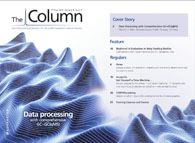Migraine pain
Migraines and chronic daily headaches can have a debilitating effect on day-to-day life. By using magnetic resonance imaging (MRI) it has been found that iron accumulation in the brain has been correlated with both the duration of illness and the frequency of attacks.

Migraines and chronic daily headaches can have a debilitating effect on day-to-day life. By using magnetic resonance imaging (MRI) it has been found that iron accumulation in the brain has been correlated with both the duration of illness and the frequency of attacks.
A group of scientists have now carried out an experiment to measure the relationship between iron deposition in basal ganglia and pain regulatory nuclei in both neurologically healthy control volunteers and in patients with differing migraine subtypes.1 The team hoped to evaluate the tradeoff between sensitivity and specificity in T2 imaging of patients with migraine, and found that only T2 imaging in the globus pallidus was able to distinguish between episodic and chronic migraine, which suggests that this technique may be the most appropriate to assess migraine frequency. Patients with medication overuse headache (MOH) did not demonstrate T2’ shortening. As iron accumulation should cause shortening of both T2 and T2’ it was concluded that something other than increased iron deposition could be playing a role in MOH.
1. S.E. Jones et al., Headache: The Journal of Head and Face Pain, 52(2), 236–243 (2012).
This story originally appeared in The Column. Click here to view that issue.
Removing Double-Stranded RNA Impurities Using Chromatography
April 8th 2025Researchers from Agency for Science, Technology and Research in Singapore recently published a review article exploring how chromatography can be used to remove double-stranded RNA impurities during mRNA therapeutics production.
The Effect of Time and Tide On PFAS Concentrations in Estuaries
April 8th 2025Oliver Jones and Navneet Singh from RMIT University, Melbourne, Australia discuss a recent study they conducted to investigate the relationship between tidal cycles and PFAS concentrations in estuarine systems, and offer practical advice on the sample preparation and LC–MS/MS techniques they used to achieve the best results.











